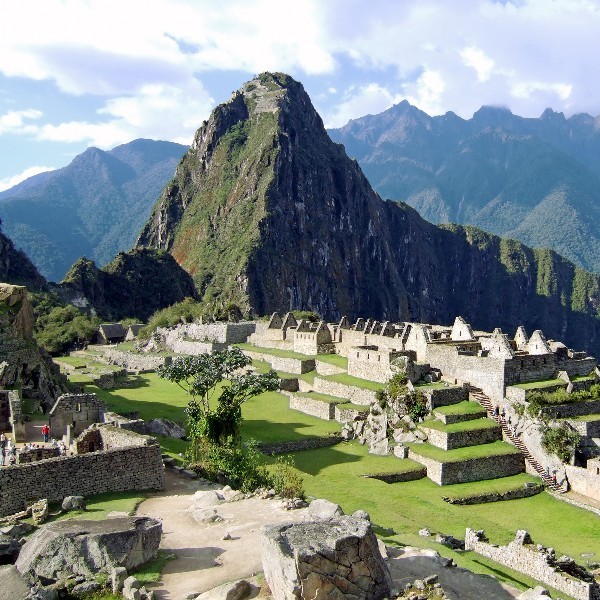- Tuesday 02 February 2010
Everything about Machu Picchu makes you marvel that it ever came to exist. The lost city of the Incas is built on a saddle-shaped ridge slung between two giant peaks. Near-vertical slopes drop away on either side, down to a massive bend in the Urubamba River. One can only imagine wot motivated the Incas to undertake such construction at this remote location in the Andean cordillera. Machu Picchu, built over 700years ago and hidden by jungle since the 16th century, was rediscovered in 1911. It consists of about 200 buildings, which include dwellings and temples, a central plaza and a royal palace, all flanked by terraces for farming. The stone for the buildings was mined from a quarry and shaped using bronze tools, then smoothed by sand in order to fit tightly together. No mortar was used in the construction. Even after many centuries of wear and tear, the precision is amazing. The way that existing rock features were incorporated into the design is one of the reasons Machu Picchu is so notable. Inevitably, the craftsmanship on sacred buildings is the finest. For spectactular views, make the steep climb up to Wayna Picchu, the mountain behind Machu Picchu. Alternatively, climb to the top of the less crowded Machu Picchu peak, which catches the first rays of the rising sun. Both mountains over look the entire site, down to the river below, which puts the Incas great achievement of construction into perspective. The Incas worshipped the sun god Inti, so the summer solstice was the most important day in their calendar, and the Temple of the Sun their most important building. In fact, all their temples and sacred sites were designed to mark solar and astrological events. A stone Intihuatana ("Hitching Post of the Sun"), is the focus of a major religious site where a ritual was preformed, in the shortening days before the winter solstice, to prevent the sun disappearing. Similar stones were at other Inca sites, but were damaged or destroyed by Spainish conquistadores. The one at Machu Picchu survived because the site was never discovered. The population of Machu Picchu is believed to of been over a thousand, and the people were so distant from other settlements that they would of produced much of their own food. This accounts for the intricately terraced fields, which have survived remarkably intact thanks to the care and skill that went into their construction. Maize and potatoes were grown, and advanced irrigation techniques were used to ensure that rainwater didn't just run off down the hill to the Urubamba River far below. No-one knows for sure why Machu Picchu was built. Some surmise that it was a royal or religious retreat for one of the Inca rulers. Certainly its remote location and altitude of nearly 2500 metres would seem to rule out any trade or military function. Whatever its use, the obvious effort that went into its construction indicates that it was considered important and held in high regard by those who created it.


